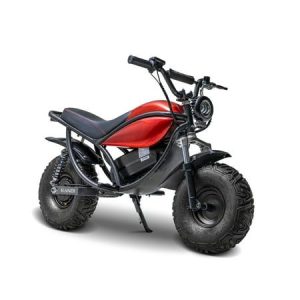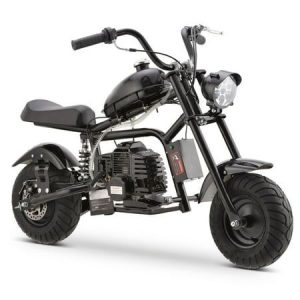Imagine this: you’re ready for a weekend motorcycle adventure, gear loaded, helmet strapped on, only to find your motorcycle sputters and dies due to a dead battery. Frustrating, right? A properly charged motorcycle battery is vital for a smooth start and a worry-free ride. But how long does it actually take to charge a motorcycle battery?
This comprehensive guide unravels the mystery of motorcycle battery charging times. We’ll explore factors influencing charging duration, delve into different charging methods, and offer valuable tips to optimize your battery charging routine.
Understanding Motorcycle Battery Charging Time
Unlike filling a gas tank, charging a motorcycle battery isn’t a one-size-fits-all process. The time to charge a motorcycle battery depends on several key factors:

-
Battery Capacity: Larger batteries with higher Amp-hour (Ah) ratings naturally take longer to charge compared to smaller batteries.
-
Battery Discharge Level: A completely dead battery will take significantly longer to charge than a partially depleted one.
-
Charger Type: Different charger types have varying output currents. A higher output current translates to faster charging times, but it’s crucial to use a charger compatible with your specific battery type.
-
Battery Age and Health: Older batteries or those with reduced health might take longer to charge or may not reach a full charge.
-
Ambient Temperature: Extreme temperatures, both hot and cold, can impact charging efficiency. Ideally, charge your battery in a cool, dry environment.
By considering these elements, you can gain a realistic estimate of how long it will take to charge your motorcycle battery.
Types of Motorcycle Battery Chargers: Understanding Your Options
When it comes to charging your motorcycle battery, you have two main options:

-
Standard Battery Charger: This is the most common and affordable type of charger. It typically offers a lower output current (around 2-4 amps) and takes longer to charge a battery fully. Standard chargers are suitable for occasional charging needs or maintaining a partially discharged battery.
-
Automatic Battery Charger: These intelligent chargers offer a more user-friendly experience. They automatically adjust the charging current based on the battery’s needs and switch to a maintenance mode once fully charged. This helps prevent overcharging, which can damage the battery. Automatic chargers are ideal for frequent charging or for those who prefer a set-and-forget approach.
Choosing the right charger depends on your budget, charging frequency, and desired features. Standard chargers are a cost-effective option for occasional use, while automatic chargers offer convenience and protection for your battery.
Essential Steps for Safe and Effective Motorcycle Battery Charging
To ensure a safe and successful charging experience, follow these motorcycle battery charging tips:

-
Consult Your Owner’s Manual: Refer to your motorcycle’s owner’s manual for specific instructions and recommendations on battery charging. Different motorcycles might have varying procedures or charging port locations.
-
Turn Off the Motorcycle: Always ensure your motorcycle is turned off and the keys are removed before connecting the charger.
-
Identify Battery Terminals: Locate the positive (+) and negative (-) terminals on your battery. These terminals are typically marked with red and black colors, respectively.
-
Connect the Charger: Connect the charger’s positive (+) cable to the positive (+) terminal on the battery and the negative (-) cable to the negative (-) terminal. Double-check the connections to avoid any polarity issues.
-
Start the Charging Process: Turn on the charger and follow the specific instructions for your chosen charger model. Automatic chargers typically initiate the charging process automatically.
-
Monitor Charging Progress: Most chargers display charging indicators or lights to show the progress. Standard chargers might require you to monitor the charging time based on the battery capacity and initial discharge level.
-
Disconnect the Charger: Once the charging cycle is complete (indicated by a light or automatic shutoff on the charger), disconnect the charger following the reverse order of connection (negative cable first, then positive).
-
Clean the Battery Terminals (Optional): Over time, corrosion can build up on battery terminals. After disconnecting the charger, you can clean the terminals with a wire brush and baking soda solution to improve conductivity for future charging.
By following these steps and safety precautions, you can effectively charge your motorcycle battery and ensure a smooth start for your next ride.
Troubleshooting Common Battery Charging Issues
Even with proper procedures, you might encounter occasional hiccups during the charging process. Here’s how to address some common motorcycle battery charging problems:

-
Charger Not Turning On: Double-check that the charger is plugged into a working outlet and ensure all connections to the battery are secure and correct. If the issue persists, consult the charger’s manual or troubleshoot with the manufacturer.
-
Slow Charging: A standard charger might take longer to charge a completely dead battery. If you suspect slow charging with an automatic charger, it might indicate a faulty charger or a significantly compromised battery that may require replacement.
-
Charger Overheating: Extreme heat can damage the charger and the battery. Ensure proper ventilation around the charging area and avoid using the charger in direct sunlight. If the charger persistently overheats, discontinue use and consider replacing it.
-
Battery Not Holding a Charge: If your battery charges quickly but fails to hold a charge, it’s a strong sign of a failing battery that needs replacement. Consider its age and overall health to determine if a new battery is necessary.
If you encounter any of these issues, addressing them promptly can prevent further damage to your battery or charger. In some cases, seeking assistance from a qualified mechanic might be necessary for proper diagnosis and resolution.
Maximizing Motorcycle Battery Lifespan: Keeping Your Rides Going Strong
Just like any other motorcycle component, your battery requires proper care to ensure optimal performance and longevity. Here are some valuable tips to maximize the lifespan of your motorcycle battery:
-
Maintain a Clean and Healthy Electrical System: Regularly check your motorcycle’s electrical system for corrosion or loose connections. Address any electrical issues promptly to prevent parasitic drain that slowly discharges the battery.
-
Avoid Short Trips: Frequent short trips don’t allow the battery to fully recharge. If possible, incorporate longer rides into your routine to promote a complete charging cycle.
-
Store Your Motorcycle Properly: When storing your motorcycle for extended periods, ideally use a battery tender. This trickle charger supplies a minimal continuous charge to maintain battery health and prevent sulfation, the crystallization of lead sulfate plates that reduces battery capacity.
-
Invest in a Quality Charger: Using a high-quality charger specifically designed for motorcycles helps ensure proper charging and prevents damage from overcharging.
-
Consider Upgrading to a Li-ion Battery: While typically more expensive, Lithium-ion (Li-ion) batteries offer a longer lifespan and require less maintenance compared to traditional lead-acid batteries.
By implementing these practices, you can significantly extend the life of your motorcycle battery and avoid premature replacements. Remember, a healthy battery translates to fewer breakdowns and more enjoyable rides.
When to Replace Your Battery
Even with the best care, motorcycle batteries eventually reach the end of their usable life. Here are some signs that indicate it might be time for a motorcycle battery replacement:

-
Slow Cranking: If your motorcycle struggles to crank over, especially on cold mornings, it’s a strong indicator that the battery might be nearing the end of its life and lacking sufficient power to start the engine.
-
Dim Lights: A weak battery can also manifest in dimmed headlights, taillights, and other electrical components. This is because the battery can’t provide the necessary voltage to power them adequately.
-
Frequent Charging: If you find yourself needing to charge your battery more frequently than usual, it’s a sign that the battery’s capacity is diminishing, and a replacement might be necessary.
-
Battery Age: As a general rule, consider replacing your motorcycle battery after 4-5 years, even if you haven’t experienced any noticeable issues. Batteries degrade naturally over time, and a proactive replacement can prevent unexpected breakdowns on the road.
-
Visible Damage: If you notice any physical damage to the battery case, such as cracks, leaks, or bulging, it’s crucial to replace the battery immediately. Damaged batteries pose a safety risk and should not be used.
By staying alert to these warning signs, you can ensure a timely motorcycle battery replacement and avoid getting stranded with a dead battery.